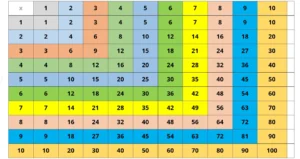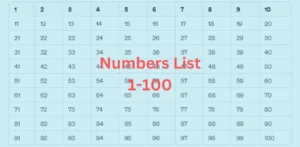High school math problems are an integral part of the curriculum for students pursuing education in mathematics.
These problems serve as the foundation for advanced mathematical concepts and real-world applications.
Examples of High School Math Problems
Here’s a comprehensive list of the main topics in high school mathematics to learn and practice.
1. Algebra
- Solving Linear Equations
- Solving Quadratic Equations
- Factoring
- Systems of Equations
- Exponents and Radicals
- Rational Expressions
- Inequalities
- Absolute Value Equations
2. Geometry
- Points, Lines, and Planes
- Angles and Polygons
- Triangles (Types, Properties, Congruence)
- Quadrilaterals
- Circles and Circular Geometry
- Area and Perimeter
- Volume and Surface Area
- Transformations (Translations, Rotations, Reflections)
- Similarity and Congruence
3. Trigonometry
- Trigonometric Ratios (Sine, Cosine, Tangent)
- Trigonometric Identities
- Trigonometric Equations
- Law of Sines and Law of Cosines
- Unit Circle
- Trigonometric Functions and Graphs
- Inverse Trigonometric Functions
4. Pre-Calculus
- Functions and Their Properties
- Polynomial and Rational Functions
- Exponential and Logarithmic Functions
- Analytic Geometry
- Limits and Continuity
- Introduction to Calculus Concepts
5. Advanced Calculus
- Limits and Continuity
- Differentiation (Derivatives)
- Applications of Differentiation
- Integration (Antiderivatives)
- Applications of Integration
- Fundamental Theorem of Calculus
- Techniques of Integration
6. Statistics and Probability
- Data Analysis and Interpretation
- Descriptive Statistics
- Probability Concepts
- Probability Distributions (Binomial, Normal)
- Statistical Inference
- Hypothesis Testing
- Correlation and Regression
7. Matrice and Linear Algebra
- Matrix Operations
- Determinants
- Vector Spaces
- Linear Transformations
- Eigenvalues and Eigenvectors
8. Discrete Mathematics
- Combinatorics and Counting
- Graph Theory
- Logic and Set Theory
- Relations and Functions
9. Number Theory
- Prime Numbers and Divisibility
- Modular Arithmetic
- Greatest Common Divisor (GCD)
- Least Common Multiple (LCM)
10. Financial Mathematics
- Simple and Compound Interest
- Annuities
- Amortization
These core concepts are taught in high school mathematics. They provide students with a solid foundation in mathematical thinking, problem-solving, and analytical skills.
Importance of High School Math Problems
1. Foundation for Advanced Learning: High school math problems lay the foundation for more advanced mathematical concepts and applications in higher education and professional life.
2. Critical Thinking and Problem-Solving: Solving math problems encourages critical thinking and problem-solving skills. It trains the mind to analyze situations, break down complex challenges, and develop logical solutions.
3. Real-world Applications: Math is not confined to textbooks; it’s everywhere in the real world. From budgeting and cooking measurements to architectural designs and data analysis, math plays a pivotal role in diverse areas of daily life and careers.
4. Standardized Tests and College Admissions: Proficiency in high school math is often required for standardized tests like the SAT and ACT.
Practical Uses of High School Math Concepts
1. Financial Management: Concepts like percentages, compound interest, and budgeting are essential for making informed financial decisions, from savings to investments.
2. Engineering and Technology: Geometry and calculus are vital for engineering and technology fields, where they’re used to design structures, develop software, and solve complex problems.
3. Data Analysis: Statistics and probability concepts are integral to interpreting and making decisions based on data in various industries, including marketing, healthcare, and social sciences.
4. Art and Design: Geometry plays a role in art and design, aiding in creating aesthetically pleasing compositions and structures.
5. Scientific Research: Mathematics forms the backbone of scientific research, aiding in formulating hypotheses, conducting experiments, and analyzing results.
Tips for Approaching High School Math Problems
1. Understand the Fundamentals: Ensure you have a solid grasp of the foundational concepts before attempting more complex problems. Without a strong base, tackling advanced problems becomes challenging.
2. Practice Regularly: Regular practice is key to mastering math problems. Set aside time each day to work on various types of problems to improve your skills and build confidence.
3. Break Down Problems: When faced with a challenging problem, break it down into smaller, manageable steps. This approach makes the problem-solving process less daunting.
4. Seek Help: Don’t hesitate to ask for help when you’re stuck. Teachers, peers, online resources, and tutoring services can provide valuable insights and explanations.
5. Use Real-life Scenarios: Relate math problems to real-life scenarios to enhance your understanding and make the learning process more engaging.
Also Read: Multiplication Chart
Conclusion
High school math problems extend beyond textbooks and classrooms. They hold immense importance in building strong foundational knowledge, fostering critical thinking, and enabling practical applications in various aspects of life.
By understanding the significance, exploring practical uses, and implementing effective strategies, you can navigate the world of high school math problems with confidence and competence.
Remember, math is not just a subject; it’s a tool that empowers you to unravel the mysteries of the universe and make informed decisions in a complex world.


